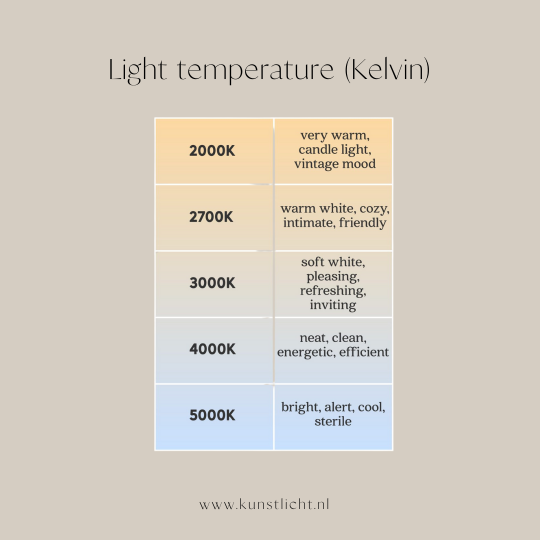Creating the perfect atmosphere: understanding light temperature in lighting design
Light temperature, also known as color temperature, is a measure of the hue of a light source, expressed in degrees Kelvin (K). Light temperature can have a significant impact on the mood and atmosphere of a space, and it's important to choose the right temperature for the intended use of the room.
Warm Light
Warm light has a color temperature between 2700K and 3000K and is often described as “yellow-ish” or “cozy.” This type of light is often used in bedrooms, living rooms, and dining rooms, as it creates a warm, inviting atmosphere. Warm light is also a popular choice for outdoor lighting, as it helps to create a welcoming ambiance for guests.
Cool Light
Cool light has a color temperature between 4000K and 5000K and is often described as “white-ish” or “clinical.” This type of light is often used in kitchens, bathrooms, and work spaces, as it provides bright, clear illumination that is ideal for tasks. Cool light is also a popular choice for outdoor security lighting, as it provides a bright, white light that can help to deter intruders.
Daylight
Daylight has a color temperature between 5000K and 6500K and is often described as “blue-ish” or “clear.” This type of light is often used in areas where accurate color rendering is important, such as art studios, makeup counters, and jewelry stores. Daylight is also a popular choice for outdoor lighting, as it provides bright, clear illumination that is ideal for illuminating large areas.
The Importance of Color Temperature in Lighting Design
The color temperature of a light source can have a significant impact on the mood and atmosphere of a space. For example, warm light is often used in bedrooms and living rooms to create a cozy, inviting atmosphere, while cool light is often used in kitchens and bathrooms for bright, clear illumination. When choosing the color temperature of your lights, consider the intended use of the room, as well as your personal preferences and style.
In conclusion, light temperature is an important aspect of lighting design that can have a significant impact on the look, feel, and functionality of a space. Whether you're looking for warm, cozy light, bright, clear light, or something in between, there is a light temperature that is right for you. Consider the intended use of the room and your personal style when choosing the color temperature of your lights, and you'll be sure to create the perfect lighting for your space.


